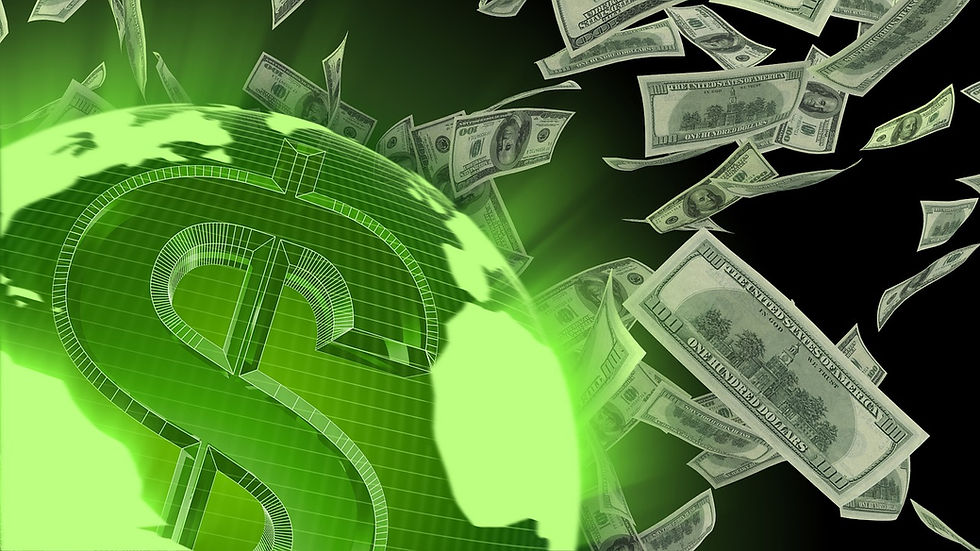The Fed and other central banks are making it rain $$ - what could go wrong?
- Edward Thomas
- Feb 1, 2018
- 2 min read
As Janet Yellen attends her final meetings this week as the Federal Reserve Chairperson, economic conditions around the world seem to be expanding. Gross Domestic Product (GDP) growth is over 6% in two of the world’s largest economies, China and India. Closer to home, the US GDP growth in 2017 is expected to come in at 2.3%, an increase over prior expectations. For these and other reasons, the Fed is expected to leave the prime rate unchanged at 1¾%.
Regardless of how this policy is interpreted by the stock market, it is widely believed that incoming Fed Chair Jerome Powell will preside over three interest rate hikes in 2018. The thinking here is that the Fed has held down interest rates for too long, at the risk of allowing inflationary pressures to grow. As I have alluded to in prior blog posts, the Fed is risking a lot to maintain an artificially low interest rate environment. Inflation will certainly result, which is what actually happened in the past. In the 1960s, the government sacrificed the inflation rate to satisfy a low unemployment goal, and the Great Inflation of the 1970s was the result.
In addition, growth in the US and worldwide economies is driving the need and the probability for interest rate adjustments in the future. Without these increases in the prime rate, the economy will become overheated and drive additional inflation. This is the classic case of not “taking away the punch bowl” as the party is getting rockin’. Janet Yellen and the Federal Reserve is “making it rain” money, and the rest of the world’s central bankers are not far behind. The world is flooded with money, and the Monday morning money hangover is not far behind…




